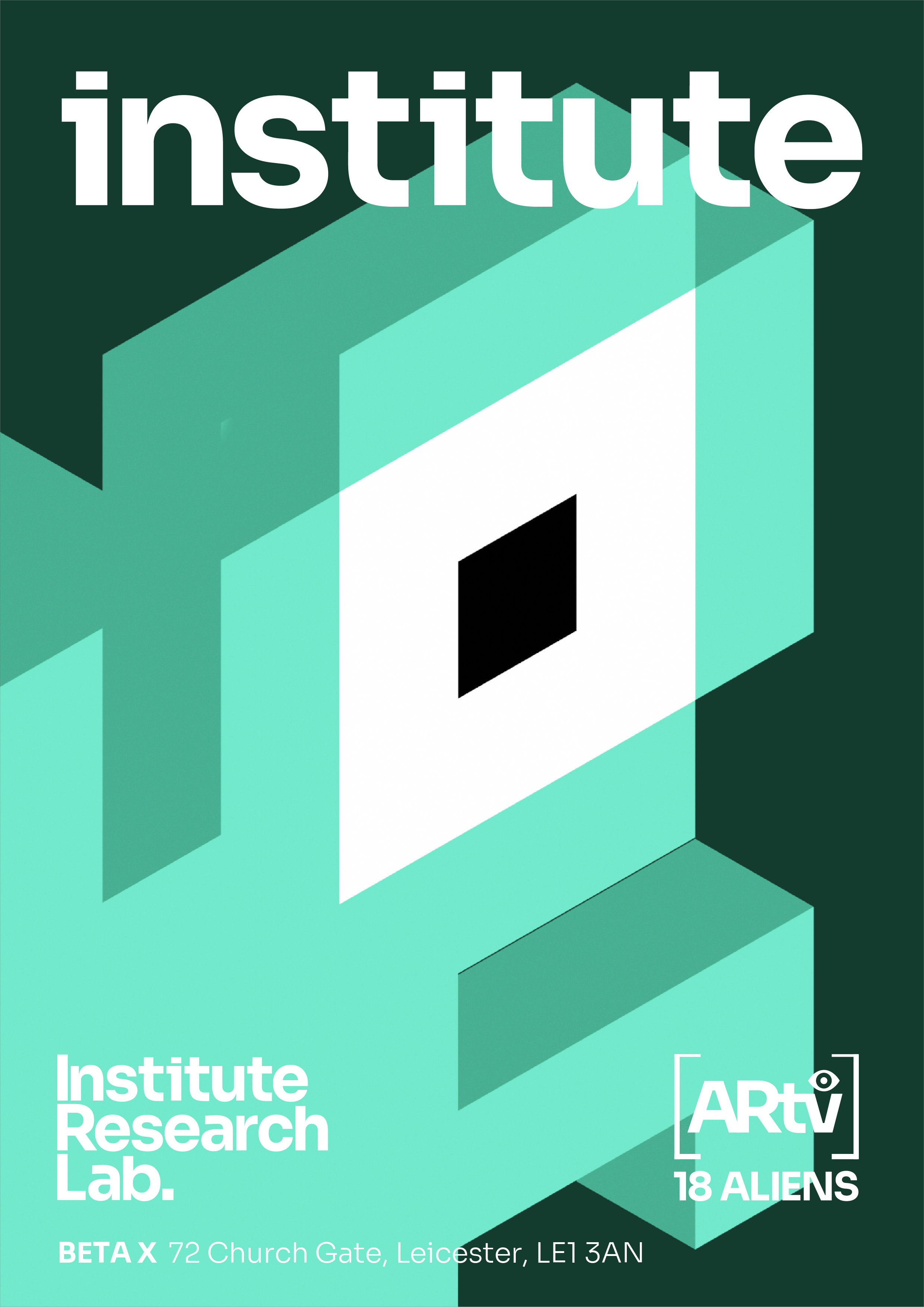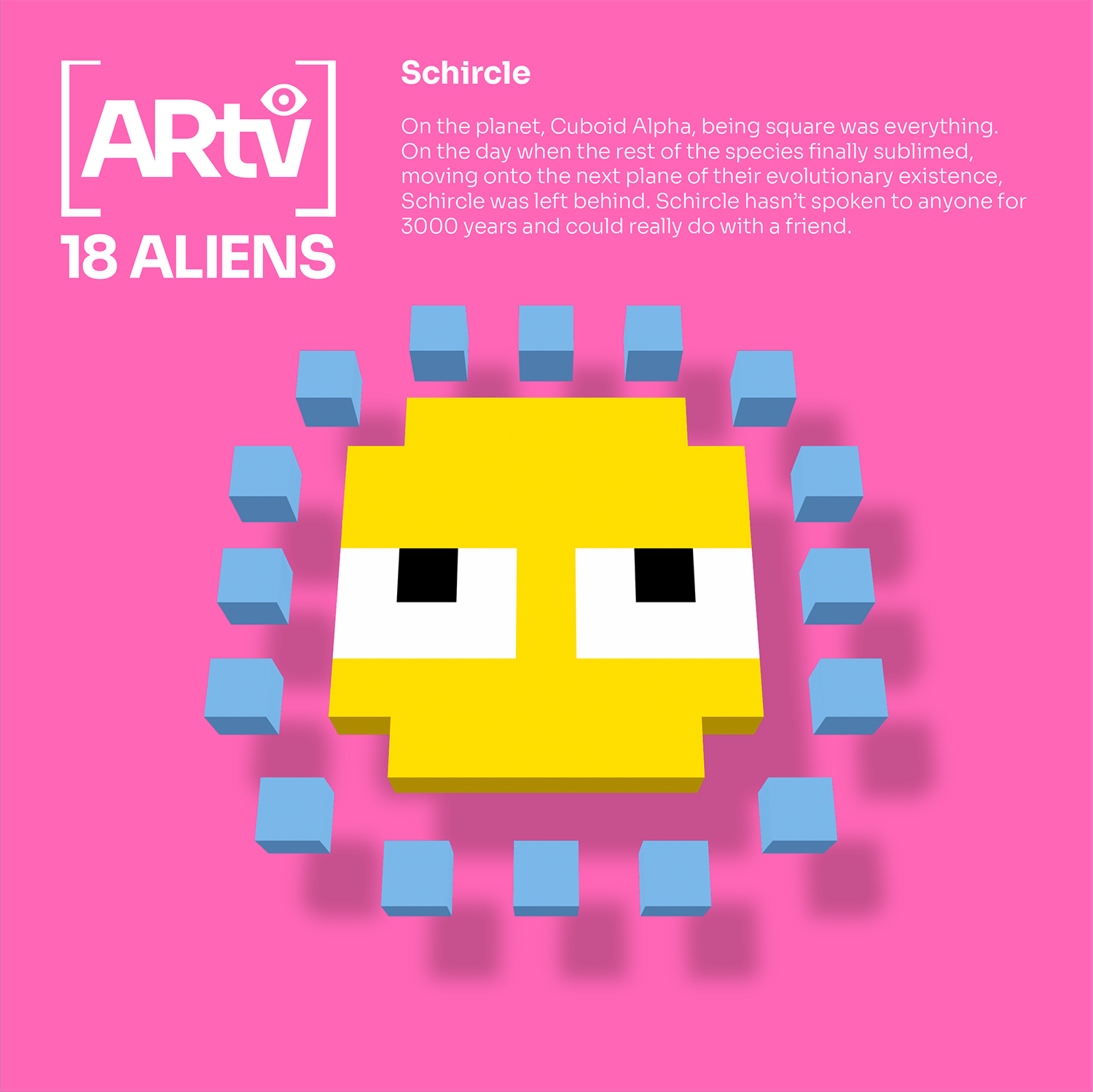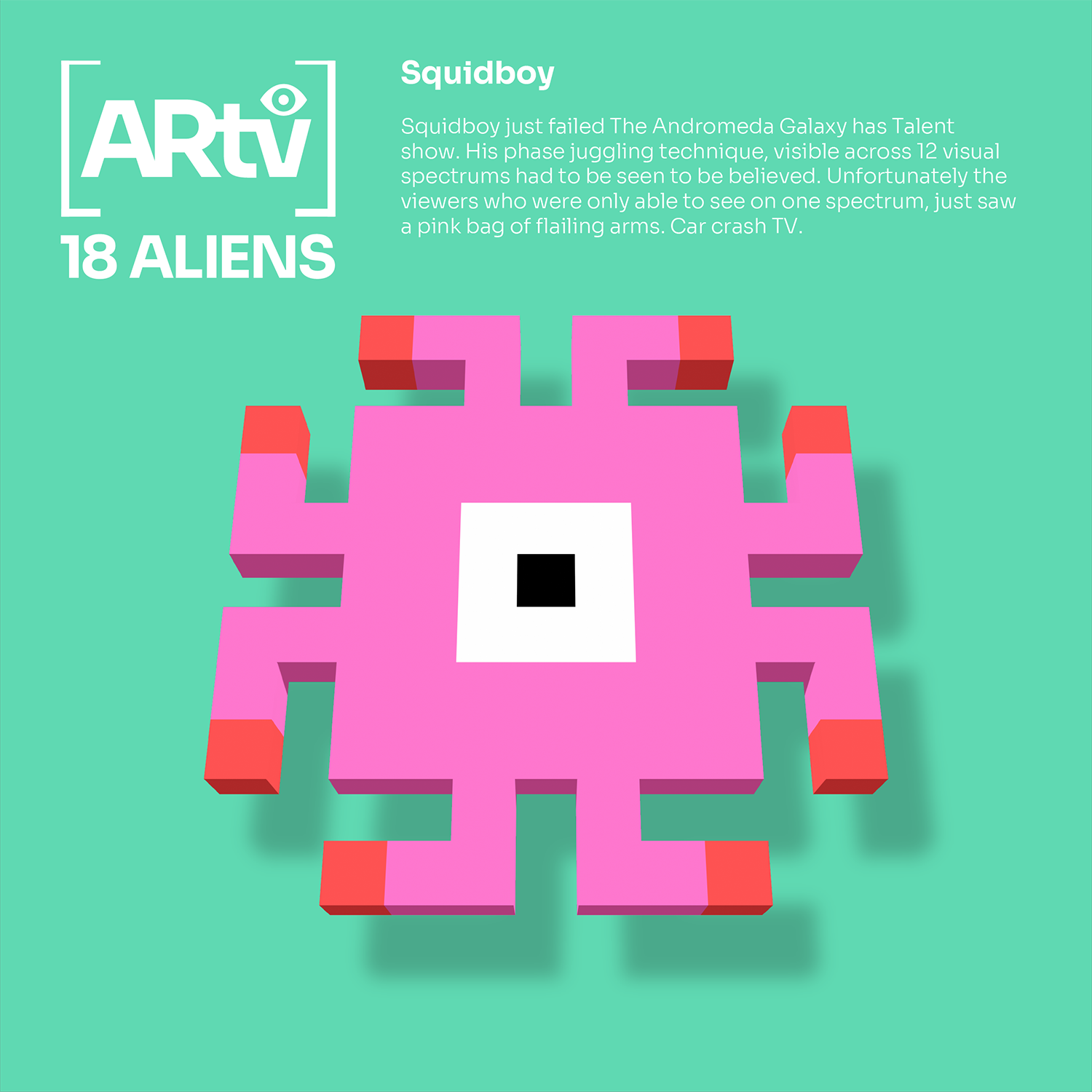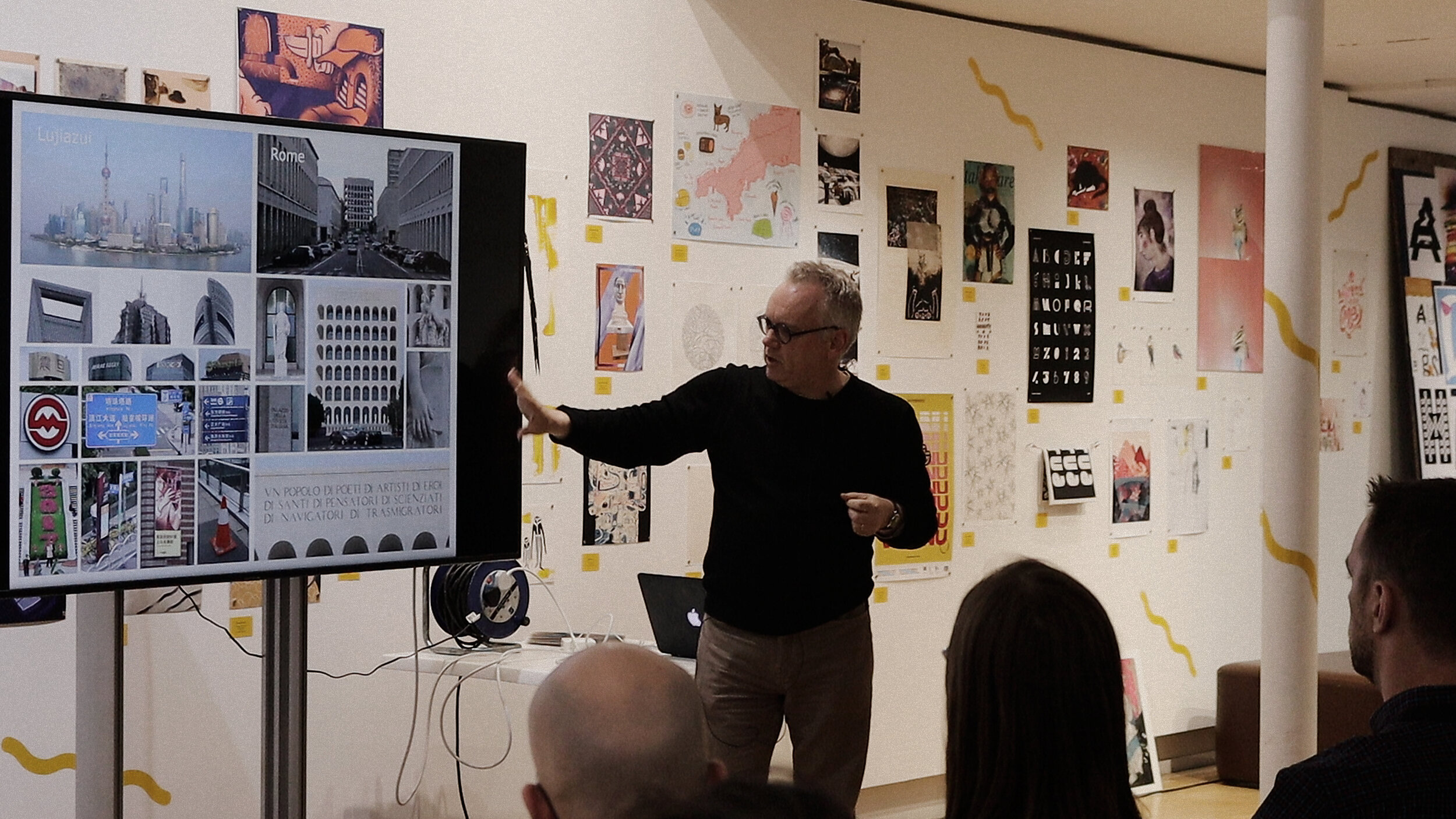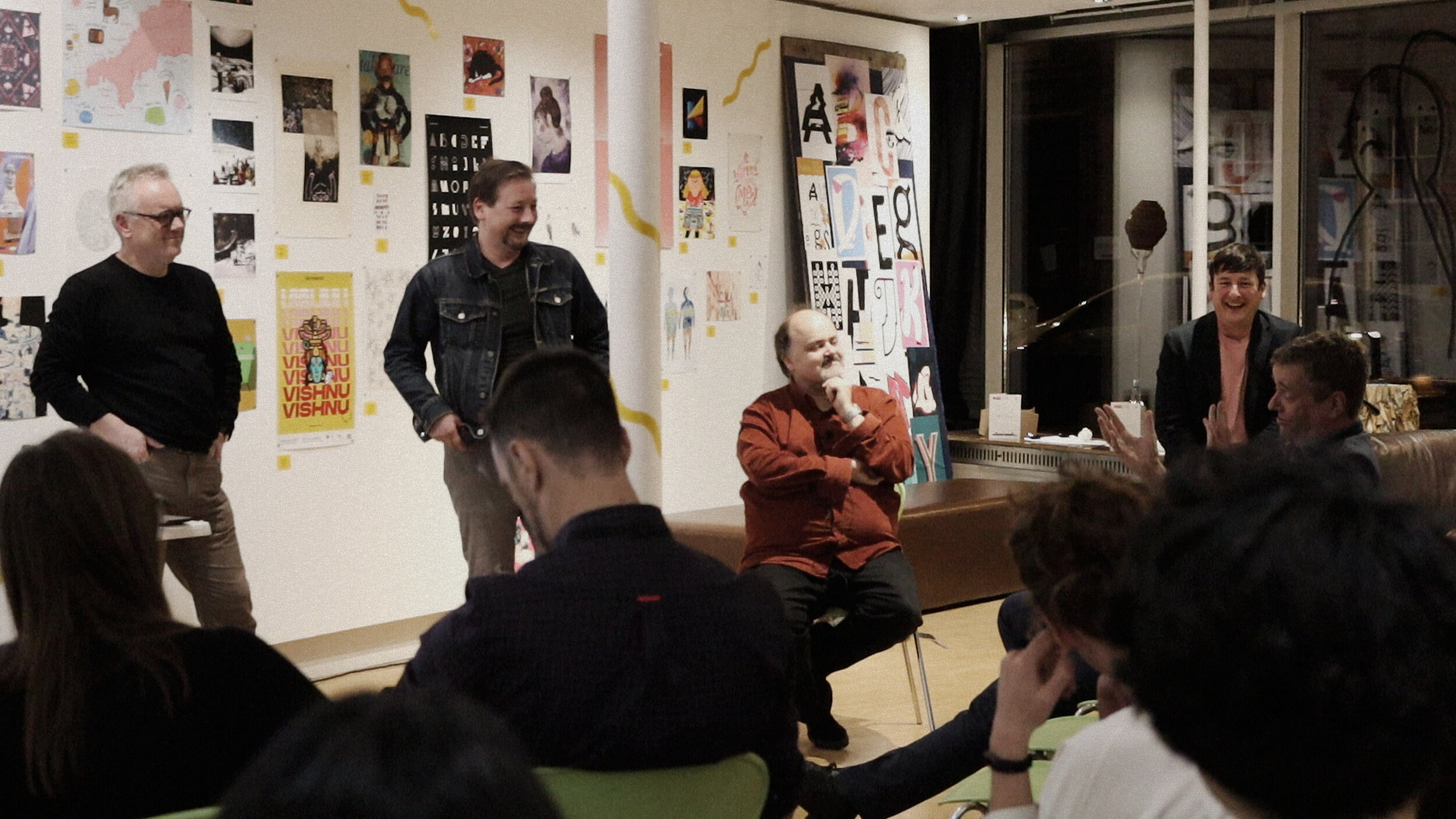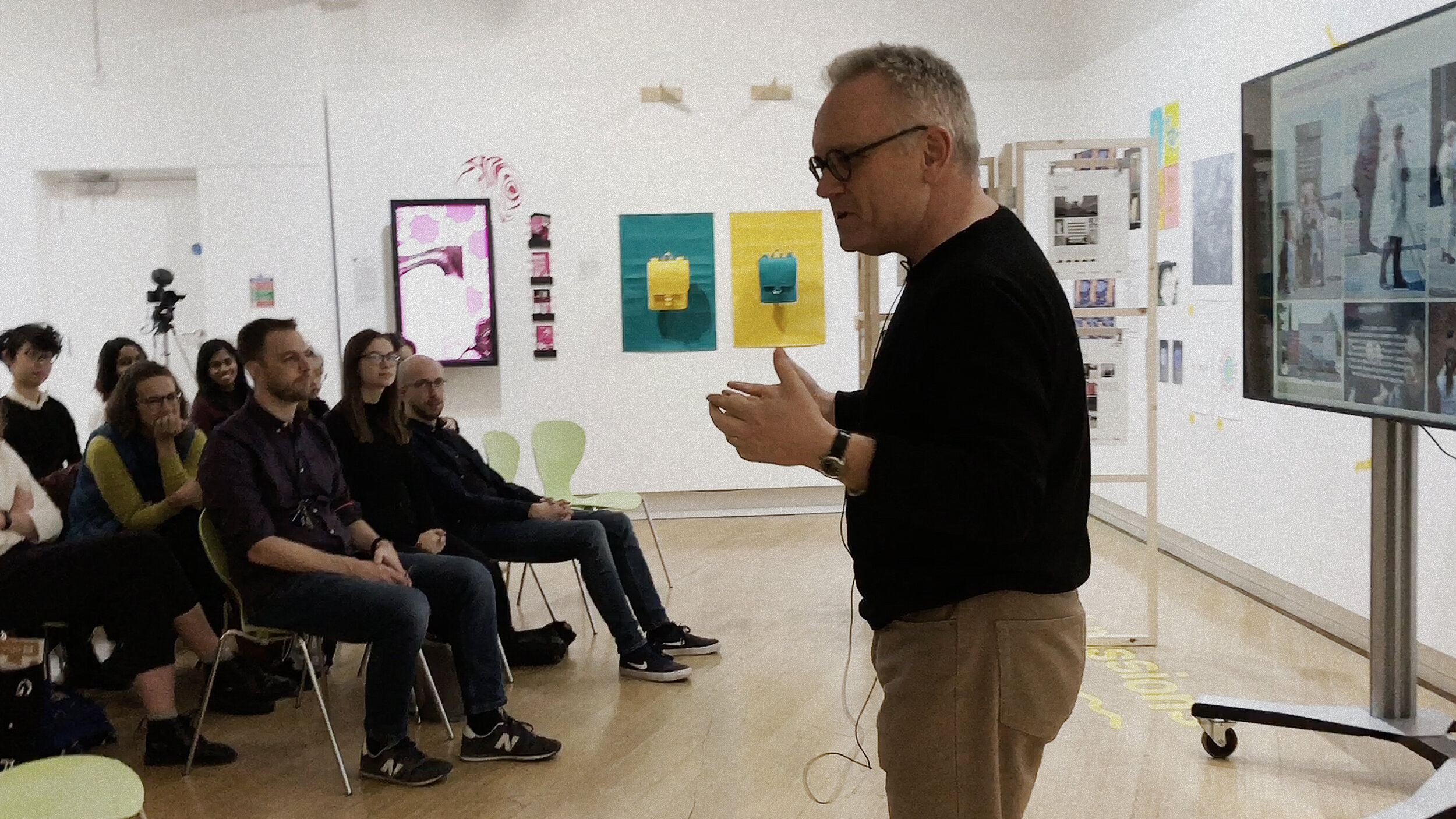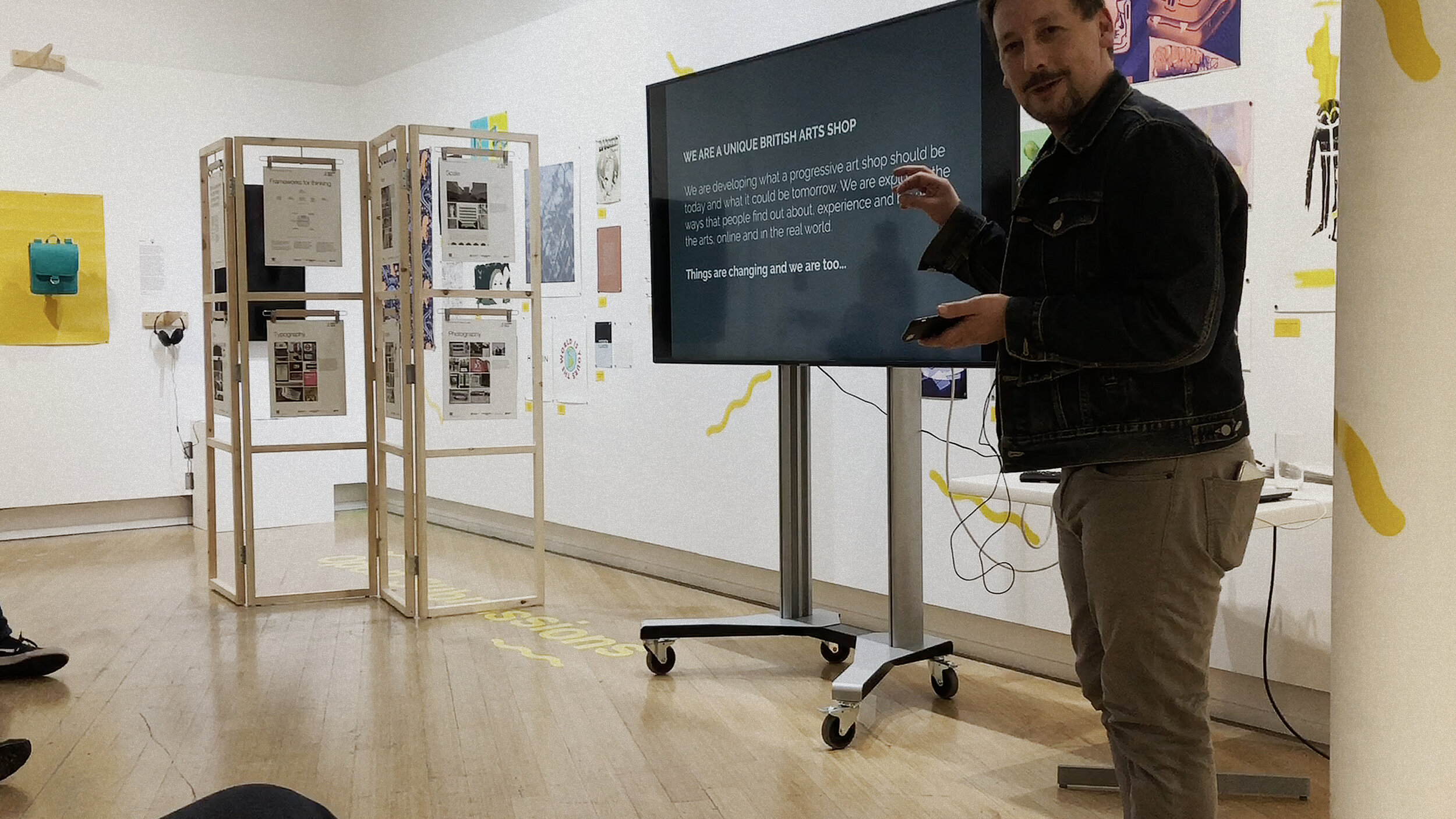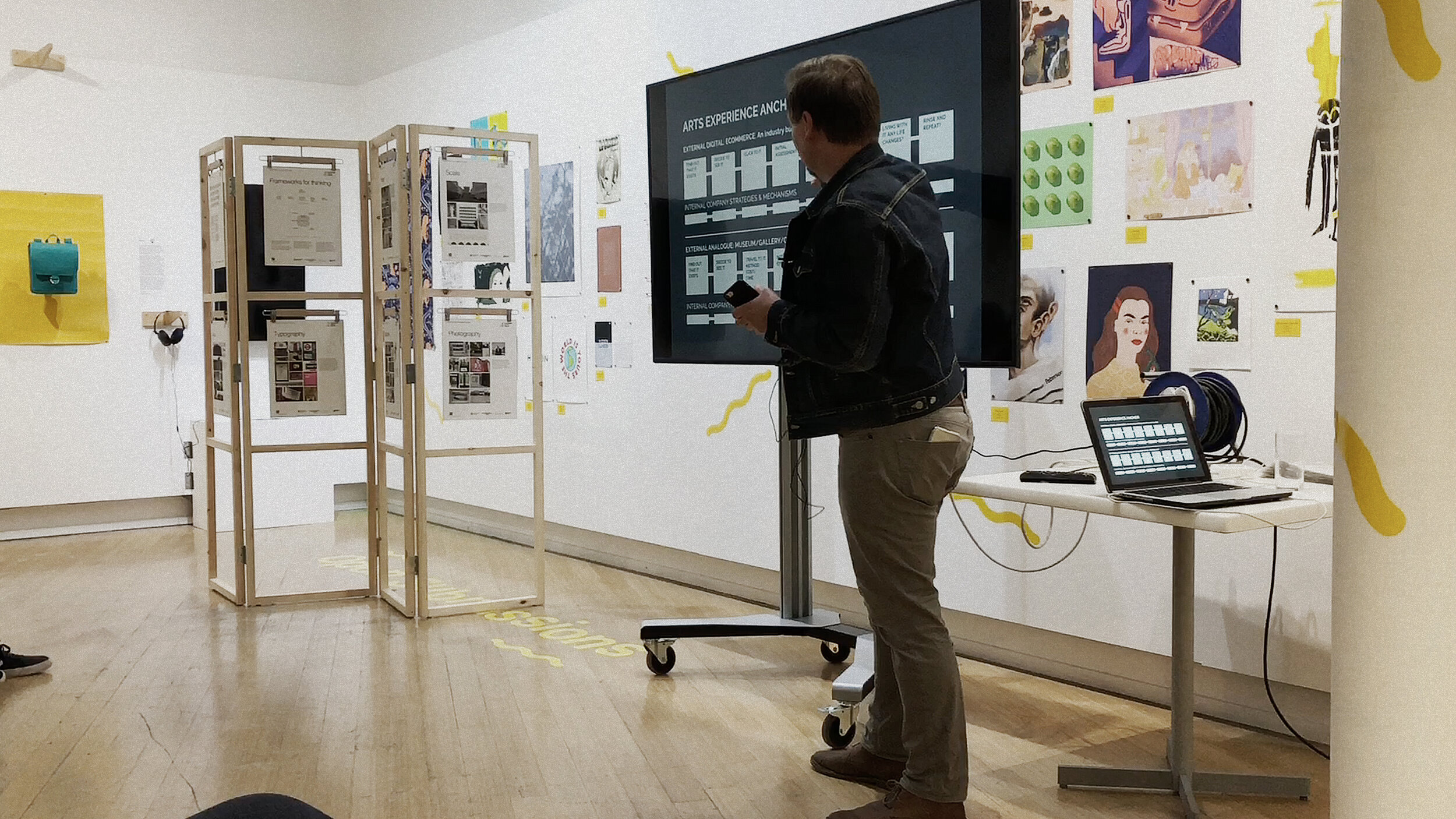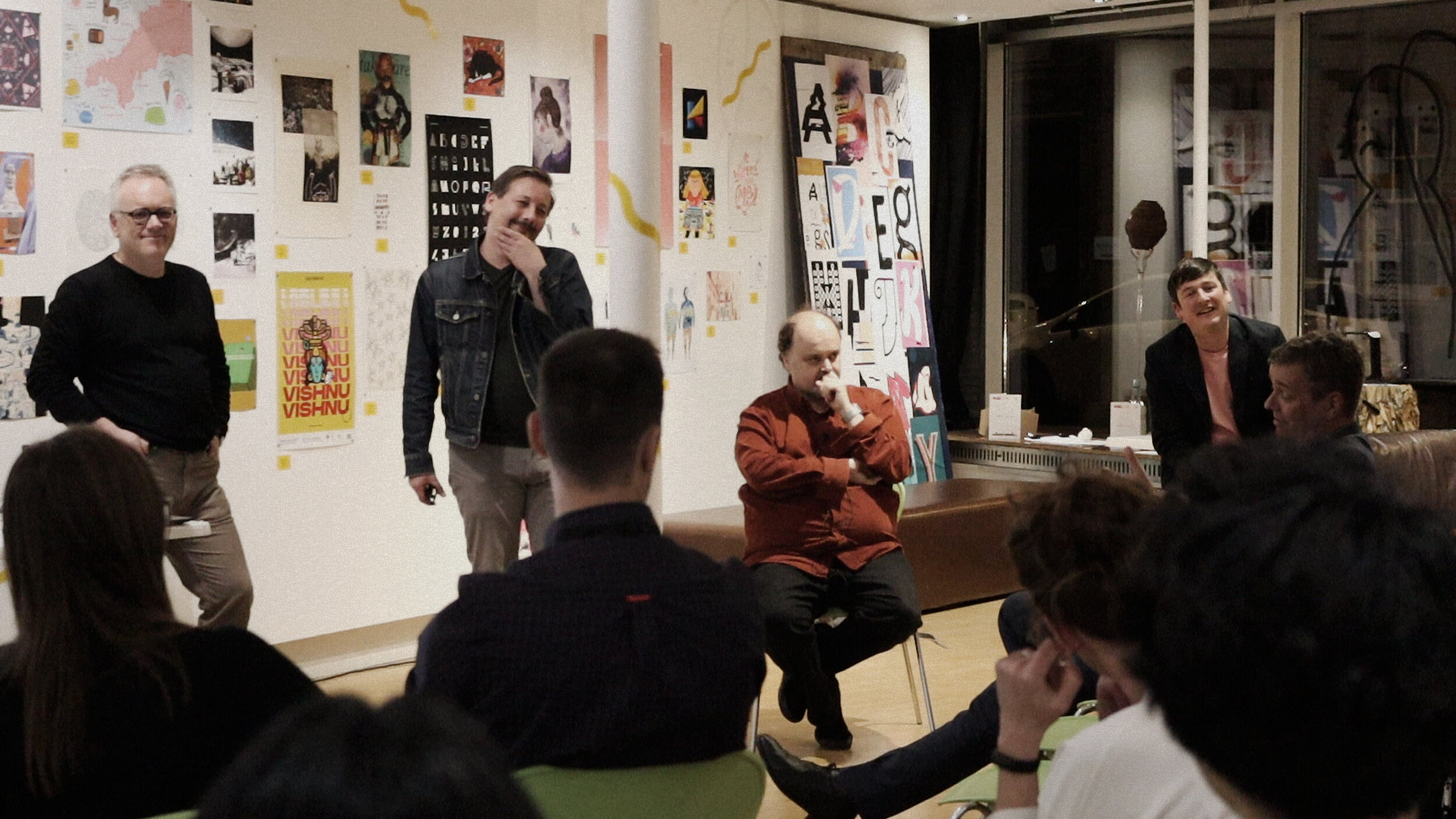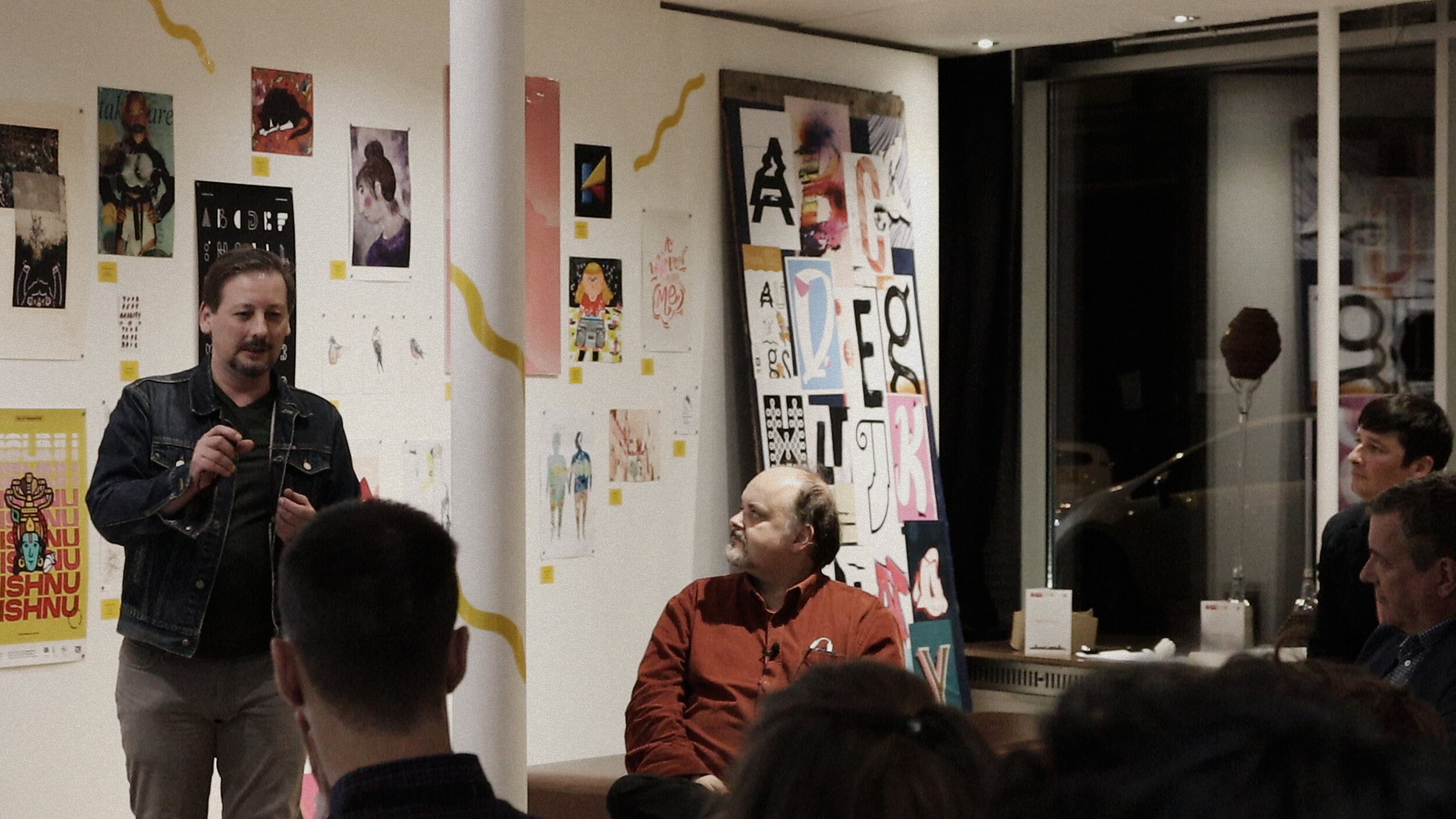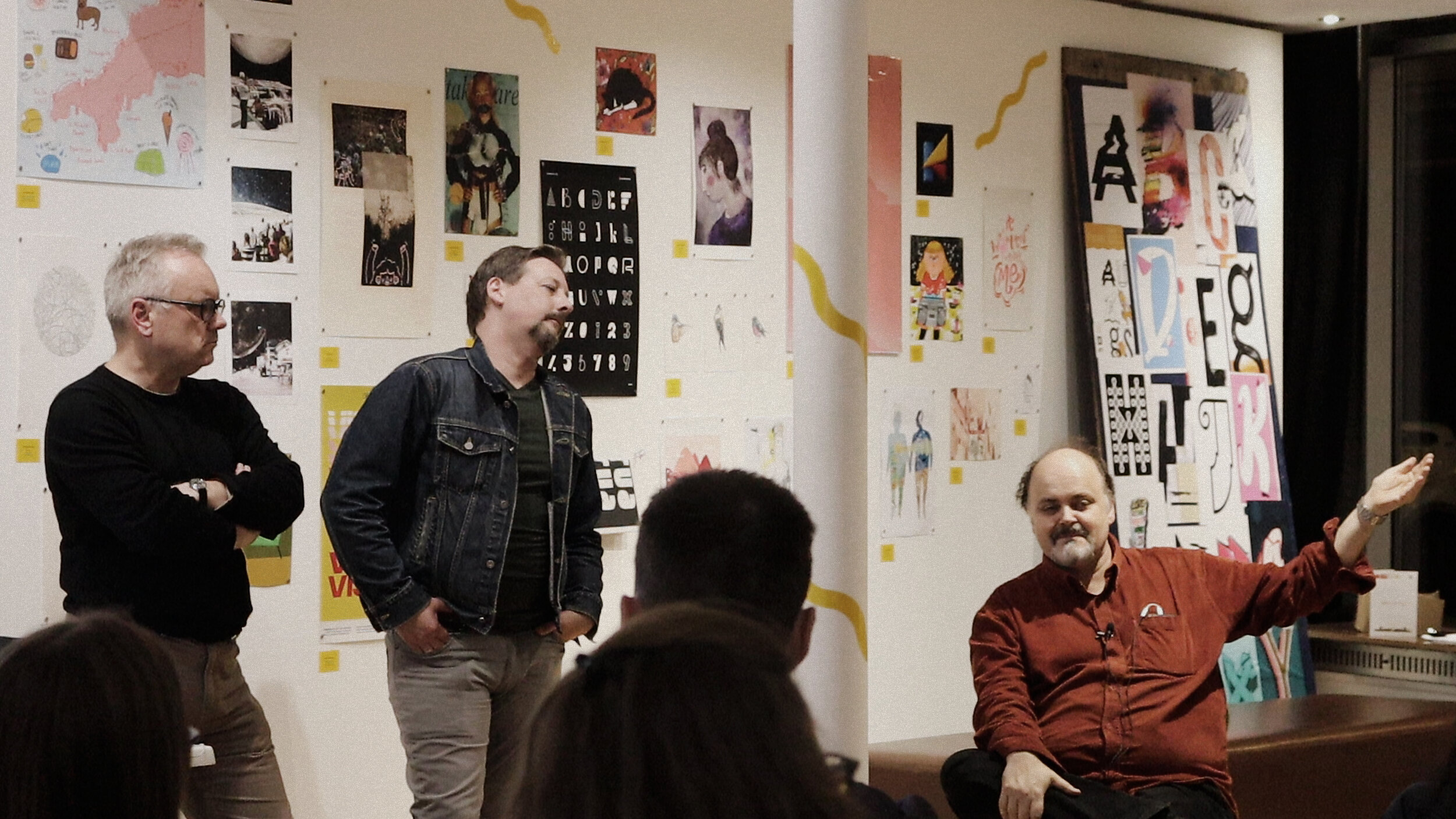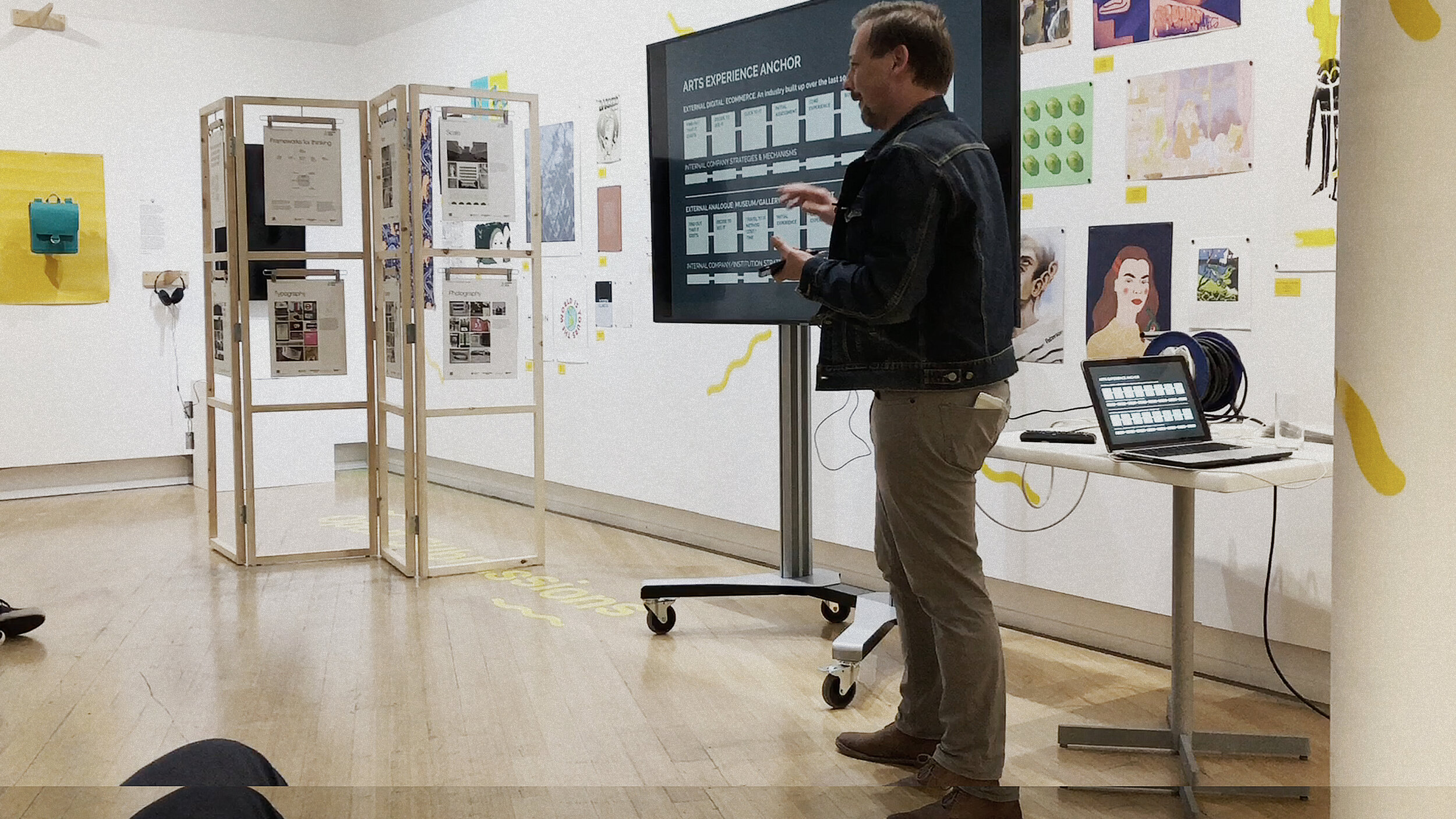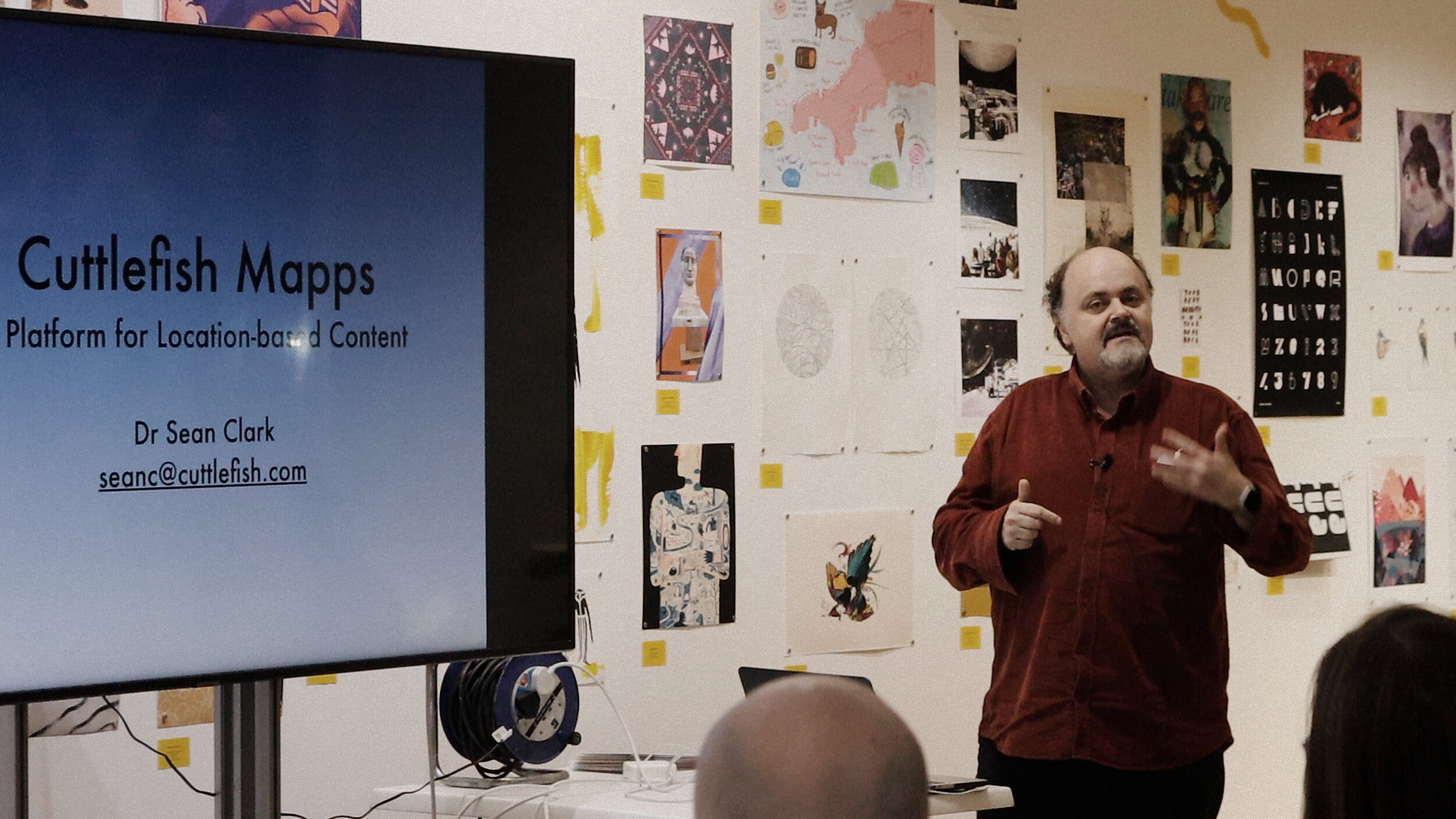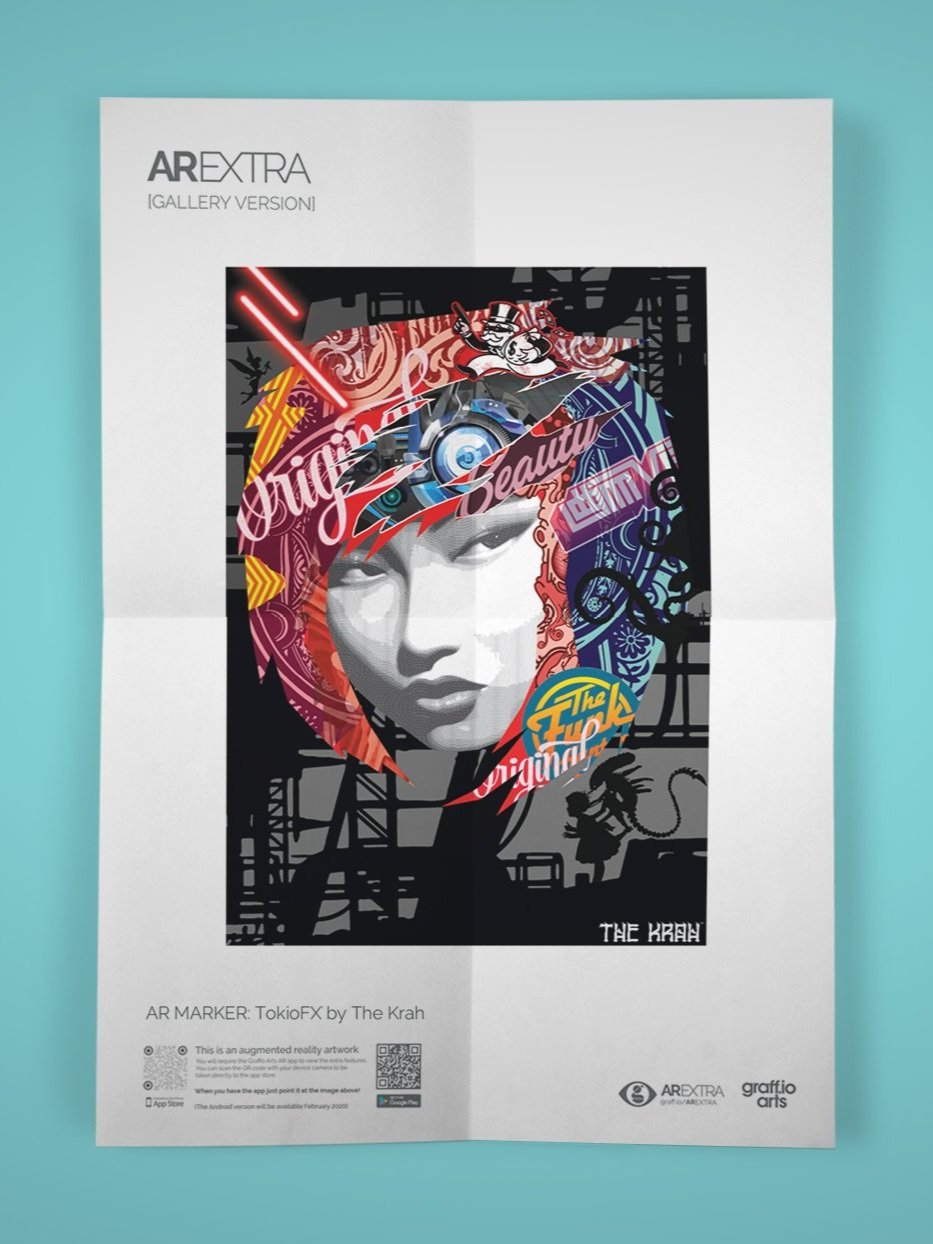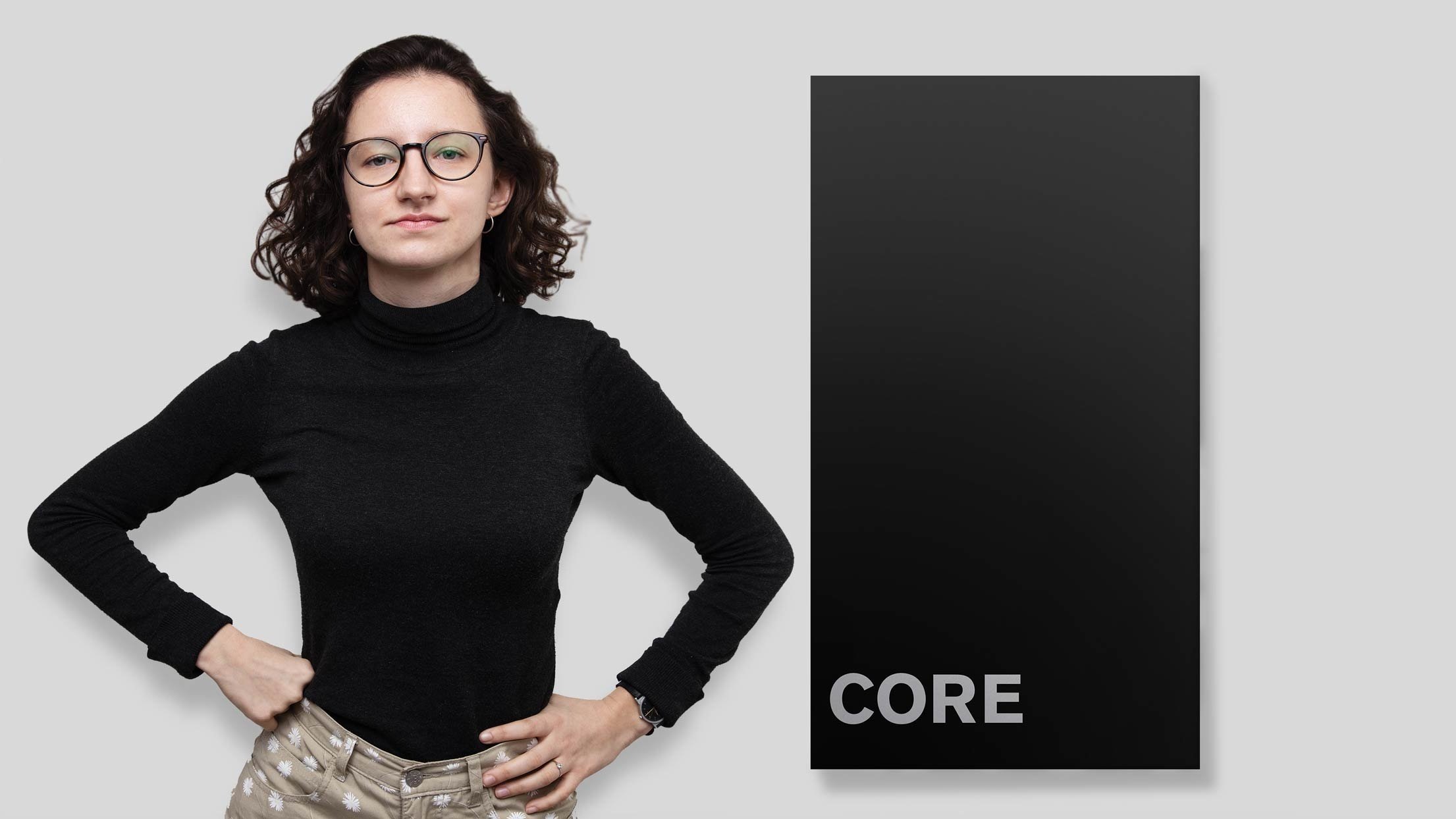CONTEXT
The Institute blog. A collection of information, essays and polemics relating to industry, culture and technology.
Business cannot exist in a vacuum. We examine the nature of ideas, communications and change within our contemporary cultural and technological landscape. We highlight potentially harmful actions and advocate for the freedom, meaning and agency required for human industry to thrive in a complicated and uncertain world.
Aliens, NFTs and the Art of Sharing
As the land grab for virtual assets continues, 18 ALIENS is a light hearted experiment in physical and virtual sharing.
18 ALIENS & ARtv
18 ALIENS was a light hearted experiment in physical and virtual sharing. We gave away 18 sets of aliens on a first come, first served basis at Beta X in Leicester in March 2022.
Concept, design + production: Graffio Arts. Pixels: Jonathan Feuillet. 3D objects + animation: Jack Ellis. The brains behind the Beta X project: Seed Creativity. Funding: LCB. Beta X project manager: Ady Alexander.
Make it stand out
Whatever it is, the way you tell your story online can make all the difference.
Make it stand out
Whatever it is, the way you tell your story online can make all the difference.
Make it stand out
Whatever it is, the way you tell your story online can make all the difference.
Make it stand out
Whatever it is, the way you tell your story online can make all the difference.
Make it stand out
Whatever it is, the way you tell your story online can make all the difference.
WHAT IS ARtv?
ARtv is an augmented reality content delivery system. Show video or activate 3D objects whenever you point your mobile device at an ARtv symbol. Each symbol can be unique and each can deliver it’s own content. A symbol could be a picture, a graphic or a logo.
Symbols can be displayed anywhere that you can imagine - on a poster, a wall or even as a tattoo. If you’d like to find out how you could use ARtv for your project, then get in touch.
Make it stand out
Whatever it is, the way you tell your story online can make all the difference.
Make it stand out
Whatever it is, the way you tell your story online can make all the difference.
18 ALIENS AT BETA X
These aliens have no monetary value and are comprised of pixels. Each alien was presented as an augmented reality marker on a series of cards. These cards can be shared with friends, family or random strangers, as you see fit, sharing your ownership of the alien. Anyone that owns a card can download the Graffio AR app and point it at the card to summon their alien from a galaxy far away!
The concept of virtual ownership is becoming more and more a part of our daily lives. When viewing a movie, we used to purchase a physical product, like a DVD. Now, it is more common to pay a gatekeeper to allow us to stream content. In this interaction, we no longer own a physical object and our access to the content may only be for a limited time. Virtual properties in virtual worlds continue to develop in terms of status and real monetary value.
Crypto currencies are on the rise and NFT systems, designed to protect the intellectual property rights of creators are now a part of a frenzied land grab of virtual assets. Meta seeks to control our experience of the Metaverse. As these new frontiers continue to develop should we stand back and ask what we want from virtual worlds? How do we want to interact with each other? What do we value? Is it all about individual or corporate ownership? Remember when we used to share?
THE POSTERS
Make it stand out
Whatever it is, the way you tell your story online can make all the difference.
Make it stand out
Whatever it is, the way you tell your story online can make all the difference.
Make it stand out
Whatever it is, the way you tell your story online can make all the difference.
Make it stand out
Whatever it is, the way you tell your story online can make all the difference.
Make it stand out
Whatever it is, the way you tell your story online can make all the difference.
Make it stand out
Whatever it is, the way you tell your story online can make all the difference.
ALIEN PERSONALITIES
To establish the idea that each alien was an individual and worthy of collection, each alien had a backstory created. These were brief introductions with a name and a biography that was part hard sci-fi and part, a tongue-in-cheek riff on popular culture.
Make it stand out
Whatever it is, the way you tell your story online can make all the difference.
Make it stand out
Whatever it is, the way you tell your story online can make all the difference.
Make it stand out
Whatever it is, the way you tell your story online can make all the difference.
Make it stand out
Whatever it is, the way you tell your story online can make all the difference.
Make it stand out
Whatever it is, the way you tell your story online can make all the difference.
Make it stand out
Whatever it is, the way you tell your story online can make all the difference.
Make it stand out
Whatever it is, the way you tell your story online can make all the difference.
Make it stand out
Whatever it is, the way you tell your story online can make all the difference.
ALIEN BEHAVIOUR
The aliens had individual sounds, breathed and performed different actions when touched. Some would react if you got within a certain distance from them.
AUGMENTED REALITY AND YOU
A new world is opening up and if things play out in the ways that we are told that they will, it will have an enormous impact the ways that we do things. The increased use of augmented reality technology into our every day lives will likely be accelerated by brands like Apple that are investing huge sum of time and money into transforming our relationship with their current technology. We know this stuff is coming and its likely that we’re going to be using it as an addition or substitute for the technology that we current use. The day that augmented reality glasses become adopted as a mainstream device, is the day where mobile phones may start to look the quaint product of a previous generation.
The 3D aliens in this project use technology that is only currently, universally available on Apple devices although large parts of the project also worked on Android devices. We tend to create projects that have mixed functionality, so that they are as inclusive as possible.
If you’re interested in using some form of AR for a project, we can help you work through the kind of options available. Once you understand the basics and the limitations become clear, the fun starts as you consider all the things that you could do. There is incredible potential for new types of engagement, user journeys, brand associations and relationships to physical locations with augmented reality.
Want to do something incredible with AR? Tell us what you want to do!
Augmented Reality and a Sense of Place
How does graphic design in the urban environment affects your sense of place and how this might change through increased use of AR technology? Discuss!
As part of Design Season and hosted at LCB Depot in Leicester , we were asked to take part in a talk with Dr Robert Harland from Loughborough University and Dr Sean Clark from Interact Digital Arts. We were asked to consider how graphic design in the urban environment affects your sense of place and how this might change through increased use of Augmented Reality technology.
THE PROPOSITION
How does graphic design in the urban environment affect your sense of place? How is this changing through increased use of Augmented Reality technology? What new opportunities does this create for artists and designers? These questions and more will be discussed during this free session involving Dr Robert Harland from Loughborough University, Sean Clark from Interact Digital Arts and the directors of Graff.io Arts. There will also be the launch of Cuttlefish Mapps, a new locally-developed platform for distributing location-based content.
INTRODUCTION
This was the perfect chance for us to unravel our thoughts & idea's about the impact that Augmented Reality will have on communication, the art & design world and culture. Designers are starting to realise that with UX design that there are social/well being implications for their decisions so another discipline in the area of ethics should be brought to the table. With galleries like the V&A experiencing almost x10 the traffic online now, will AR help bring traffic from an online world to experience the physical? Will a city retain the rights to an augmented or virtual world or are we to expect a "land grab" on markers - who is in control? This was also a chance to unveil the Beta for our new Graff.io Arts Augmented Reality app & to demo it on a series of AR artworks.
AN EXCERPT OF THE TALK
We've looked into Augmented Reality and we've thought how do you do this? We've looked into apps that are avail & different technologies, The only way that we could find to really do it is to collab with @swipeandtap. A Leicester based tech company building a prototype Augmented Reality app with us.
We've got some pictures, we can show you some examples of augmented layers later.
We are GA. Small co based in Loughborough, there's only four of us. We do a lot of creative collabs. We say that we're an art shop. This is our opening statement, written about two months ago, And we're finding that it's already out of date.
We are exploring these new areas, which encompass the kind of things that are coming up within that shop experience. If you go to a museum & you're dealing with art in a museum. Or if you're dealing with a shop and you're buying online. There are all these different channels & projects coming up. We've met Sean Clark and formed Gallery Without Walls together. We have Robert ( quote ). There's a lot happening right now locally in Leicestershire. I've worked in London for many years & I'm so glad that I've come back here. I've worked in London for over 20 years and I'm so glad I moved back here - I'm seeing more doors opening here & more easily and more accessibly here.
One of our company agenda's is how can do innovative creative collabs & projects here and not go bankrupt! We're looking at ways of doing this and working out if there are ways possible to stop the "brain drain". Is there any way of doing collaborative projects here and not have to move to the capital. Get as much going on locally as possible.
We've got issues here: We say we are an art shop and we sell online. We also have a problem here where we talk about the real word. What is the real world ?
So we are finding ways that a company, that's traditionally a certain kind of art shop has to change and emerge and go forward. We're looking at all the steps around looking at art and experiencing art and all the things involved in that and how we might have to change with it. That's why we're interested in AR and XR tech, because there are all these different layers.
So this sums up where we're at right now, the genie is out of the bottle! This new tech means things will never be the same.
With Minecraft & Pokemon, the kids are all used to it's commercial. Within the arts, I've been into this since William Gibson in the 90's. It's been in the creative sci-fi and cyber punk mind set for a long time. Now the tech is here for us to finally get on with it !
If we are a company thats looking at selling art or dealing with art, and how does that relate to how a museum or a gallery would deal with it? And the core journeys to experiencing art.
So how do we find out about art?
If there's an exhibition on or a print is online for sale, you don't just wake up and a canvas it lands on your head! you have to find out that it exists. In the analogue world, you might see a physical advert on a bus or get a leaflet & other physical ways that you find out that something's available?
If we were selling stuff online, this might come from a facebook ad or a comment somewhere. If it's a gallery they're putting money into leaflets or it's word of mouth. ~There's all these things going on behind the scenes.
Then how do you decide to see it? If you're online, you might click it - or not. In the analogue space this would be able your initial experience of walking into a gallery space and experiencing the architecture etc. And your REAL experience of the art.
Then your real experience of the work. At this point, we could be looking at how Augmented reality could be used to add more layers to the art. So where you needed for example Paul McCartney to sing there, we could add another layer, we could add Paul McCartney! If it was a painting, we could add an overlay through your phone to give more information about that artist. These things are real tools that help industry and help the arts in different ways. This could be able art or the arts, but we might end up needing teams of people.
So where Robert is talking about physical cities, you've got town planners then engineers, then signage...
If you’d like to talk to us about any of these themes, including augmented reality, gives us a call or email us here.
Spatial 3D AR Development with Flexi-Modal TV
Experiments in 3D Augmented Reality.
Media technology: Graffio Arts. 3D model/animation: dspall
We have been working with Wigflex and Flexi-Modal TV on some augmented reality installations for the Wigflex City Festival. There are some incredible people involved (listed below) and we’ll let you know more as things progress.
A NEW WAY TO DO 3D IN AUGMENTED REALITY
The prototyping shown here takes advantage of the transparency features of augmented reality for iOS. You are viewing a video file of an animated 3D model rather than a 3D model sitting with the space. The model had previously been animated and rendered. This animated video is playing on the screen with a transparent background giving the appearance of a 3D object.
Notice the people walking behind the iPad screen, clearly visible through the transparency of the video. When you want to define how a 3D scene should appear within a space, this is a very practical way to curate the size and relationship to the viewer. For projects where interaction with the object, control of behaviours and size should be in the viewers hands as priority, then real 3D models are the way to go. See our 18 ALIENS project for an example of this.
FESTIVAL MUSIC
Actress, Adam Curtain, Adam Pits, Aicha Audiobahn, Ben UFO, Call Super, Congi, Coralie, Daisy Godfrey, Danielle, Darc City, Daseplate, desmond, Dudley Strangeways, Frost, Geoim, G3CKO, GiGi FM, Hizatron, Ido Plumes, JAY, Kay Fabe, Kassian, Kiara Scuro, Lisene, LNR, Lone & Esqueezy, Lukas Wigflex, LvndLxrd, Metaphi, Midland Niks presents the best of black bandcamp unreleased featuring: NVST, Parris, Peach fuzz, Peder Mannerfelt, Perspective, Pete Beardsworth, R.O.S.H, Snowy, Son of Philip, Sonja Moonear, Stem, Sybertekh, Tamer Sallam, Toe Syszlak, Unbound, Vandall and Yazmin Lacey.
FESTIVAL VIDEOS, ART AND PERFORMANCE
Alice Nimier, AVVA Studio, Baba Swettham, Diogo Olivero, Dspall, Gabriel Balagué, Julia de Martino, Ixian Optical, Manjit Sahota, Marija Marc, Mathilde Avogadro, Multimodal, NINA NANA, Oil Productions, Olly animator, Poets Against Racism, Prefix studios, Render Gal, Simone Salvatici, Will Plowman and the award winning artist Wolfgang Buttress.
An Exhibition about Technology and Worthless Art
More and more of our experience of the world is going to be mediated and that includes our experience of the arts.
We were asked by LCB if we had anything for an exhibition for their Lightroom Gallery. AREXTRA Street had just launched as posters aimed at the general public. Those posters were printed onto durable, self-adhesive vinyl, designed to be plastered across empty shop windows. How would we take that into a gallery situation? Would it be appropriate?
FROM THE STREET TO THE GALLERY
AREXTRA [Street version] was a vehicle that used augmented reality to increase exposure to the arts for the general public. This was a system where people walking through the streets of the city could experience the arts without having to visit a gallery. The audience had now changed and now expected to be confronted by the arts.
This was an opportunity to engage with some of the big questions that arise from augmenting art. In this situation a 2D representation of the work is recognised by the technology and used as the platform for augmentation. Traditionally a piece of work within a gallery is considered to be an object. That object is assumed to be loaded with cultural worth. A set of factors are used to agree a monetary worth.
Augmented reality doesn’t play by these rules.
A painting, traditionally using a canvas as the place where paint is applied is now read as an image. Our understanding, development and agreed rules of engagement with painting have changed over time. It could be argued that painting was used in illustrative terms, as imagery at certain points in history but through the 20th century we have developed a sophistication and engagement that recognises the application of paint to a surface as a the battleground where an artists fights through their practice.
The results of this are hung on a wall where this creative fight, the development of their practice is evidenced and forms part of a larger conversation.
AR ignores the physicality of the work and uses a snapshot as the basis for something else. The viewers experience is largely of this something else.
To draw attention to these issues we stripped the art of traditional cultural and monetary value- we called each piece a marker (the thing that AR technology recognises). We printed these onto sheets of paper of a unified size and pinned them to the wall. After the exhibition these sheets of paper had performed their job and were destroyed. Viewers could view the exhibition with our AR app and explore the augmented reality layers- the new focus for this work in this context.
We used Lewis Carroll’s excerpt from Alice in Wonderland to highlight the idea that the genie is out of the bottle. New media technology continues to change the way we interact with the world around us. More and more of our experience of the world is going to be mediated and that includes our experience of the arts.
How would we like to proceed?
THE MARKERS
Goldfinch by Lucy Stevens
Tropics by Alexandru Cinean
Untitled by Cibo
Foliage Tree by Mono
TokioFX by The Krah
Mountains by Paraskevi Papagianni
Untitled by Kris Trigg
Meteora by Cibo
Lights Out by Tyler Spangler
SIX EMPTY SHOPS, SIX CREATIVES, SIX NEW GALLERIES...
A ground-breaking augmented reality exhibition within the streets of the city. You’ll never look at shop windows in quite the same way again…
A ground-breaking augmented reality exhibition within the streets of the city. You’ll never look at shop windows in quite the same way again…
A WINDOW TO REALITY
A Window to Reality is a public art project that is turning town centre shop windows into a walk-by augmented reality (AR) gallery.
The project demonstrates how new technologies, collaboration and fresh thinking can unlock public spaces as hybrid commercial and creative locations for the betterment of all.
Engaging directly with the decline of town centre shopping the project repurposes the windows of disused shops. The windows are turned into portals for viewing art. Through this project the streets of the city become an alternative, curated venue for broader, unexpected exposure to the arts.
HOW THE TECHNOLOGY WORKS
The viewer is presented with an artwork, the portrait and information about the artist. When they point their mobile device at the artwork, an AR layer allows them to see the creation of the work with an audio commentary by the artist.
By pointing a digital device with the Graffio Arts app at the art on the windows and extra layer of reality appears.
Viewers are shown the artist creating the work with an audio description by the artist. Viewers are offered a glimpse of creativity often reserved for a gallery space as they go about their daily lives. The combination of convenience and the exposure to the creative practice of artists seeks to flatten the learning curve often associated with engagement and the understanding of the arts.
“The project demonstrates how new technologies, collaboration and fresh thinking can unlock public spaces as hybrid commercial and creative locations for the betterment of all.”
UNUSUAL SUSPECTS MEET THE SELECTED CREATIVES
Six creatives across the arts spectrum have been selected for the project. The selection was based on the quality of their work as well as taking into consideration the potential help that extra exposure could add to their developing careers and creative practice.
Each of the six creatives were given the opportunity to label themselves, to create a persona for their performance, a way that they felt they should be identified to the public. On the following pages are a glimpse of the window banners of three of the six creatives.
We have chosen a selection of creatives at different points within their career and worked with them to deliver a piece of work that fits within the scope of the project but is also flexible enough to fit their developing practice. We aim to showcase them in a way that engages viewers and offers an insight into the creative process.
AGATA TOMASZEK
THE TYPOGRAPHER
TAYLER FISHER
THE MIXED MEDIA ARTIST
LIAM PROUDMAN
THE DOODLER
KRIS TRIGG
THE POP ARTIST
MONO
THE GRAFFITI WRITER
JAY CLARK
THE SCULPTOR
VIEWING THE EXHIBITIONS
The city window installations will only be available for a limited time (Winter 2019- Spring 2020). The details for the location of each is listed below accompanied by a video mock-up that simulates the high street viewers experience.
THE EXHIBITIONS
Installation 001
Kris Trigg recently completed his piece and his work is now viewable for a limited period ( Winter 2019 /early 2020 only ) The old Burtons 19-21 Market Place, Loughborough, LE11 3EB
Installation 002
A Window to Reality #002 was from @Mistabreakfast AKA Mono, also known as Leigh Drummond. You can view Mono's work at: The old Poundland, Loughborough for Winter 2019/20 only.
Installation 004
Installation 003
A Window to Reality #003 was from Taylor Fisher from Modern Painters, New Decorators. Tayler Fisher's piece is live for a limited period, for 2019/early 2020 only get down to Modern Painters, New Decorators - Unit 33, Carillon Court, Loughborough LE11 3XA.
A Window to Reality #004 was completed with Jay Clarke on the 21st January 2020. If you're in Loughborough, you can view Jay's work in Carillon Court- it's only up until the end of Feb 2020.
Installation 006
Installation 005
A Window to Reality #005 was from Liam Proudman. You can view Liam's work at: The Old Hospital Ct, Loughborough LE11 1TH for Winter 2019/20 only.
THE PERFORMANCES
For the performance each artist wore a distinct white working wardrobe or a white version of their clothes. This was to highlight the alternative reality version of their overlaid selves and to allow focus on their work as they moved in front of it during the creation process. We were pleasantly surprised by how little persuasion it took to get six artists to dress up.
COLLABORATION PARTNERS
Graffio Arts collaborates with partners to bring the right expertise and skills to make projects happen. We have been lucky to work with some outstanding people on this project...
Swipe & Tap APP TECHNOLOGY
Swipe & Tap worked closely with us to develop the augmented reality app. They brought a technical and creative intelligence to the development of a next-generation AR app which is now freely available for iOS and Android.
James Poole VIDEO
James and Johnny from James Poole helped us develop the AR video framework for the project. They have been present at every performance to supply and set-up equipment, advise on the video production, lighting and editing.
Hannah Bodsworth PHOTOGRAPHY
Hannah brought her expertise to producing a series of themed but distinct portrait shots that were crucial for establishing the personas of the involved creatives. As the project has developed, Hanna’s studio became the perfect hub for developing the performances.
KRIS TRIGG IS ALL TAPED UP
Kris Trigg discusses A Window to Reality.
A Window to Reality #001: THE POP ARTIST was kicked off by Kris Trigg in a local disused shop. During the performance we managed to discuss the project with Kris…
THE INTERVIEW
The following interview was conducted between Kris and James Poole during the performance in Loughborough town centre.
“Having worked with Graff.io before I am familiar with their approach and outlook. I am always open to working on new projects and we share very similar views on being open minded and progressive.”
When you got asked by Graffio Arts to be part of the project, what were your immediate thoughts?
Having worked with Graff.io before I am familiar with their approach and outlook. I am always open to working on new projects and we share very similar views on being open minded and progressive.
How do you approach a project like this?
Not to think too much about the space so I have no preconceptions. I had a vague idea that I wanted the content to be loosely based on a building that had a connection to Loughborough but apart from that I like the anticipation and the challenge.
How did you decide on the artwork for the performance?
As before loosely based on a local building. I knew that I would start off with a strip of yellow but apart from those two elements I wanted to space it would sit in to have some influence on what was produced on the day.
How did you feel that it went on the day?
Loved it. I felt very calm and happy to just let it happen. I enjoyed the bigger space around the board / canvas and this allowed me to engage with the process of producing and also to see the piece entirely from different viewpoints. I also enjoyed the pressure of producing in front of an audience as I am normally quite reserved.
JAY CLARKE COMES OUT SWINGING
Jay Clarke discusses A Window to Reality.
A Window to Reality #004 featured Jay Clarke and was a brief but explosive performance. Jay spent over fifty hours modelling his sculpture before he arrived and when the performance took place, we ran for cover. After we’d recovered, we sat down with Jay to discuss the project…
THE INTERVIEW
This interview was conducted with Graffio Arts at our studio in Jan 2020.
“ It’s been quite phenomenal hasn’t it? It’s been quite theatrical. Can’t wait to see the final production”
You've just completed AWTR #004 with us, an epic performance today. How's it been so far?
So far? It's been quite phenomenal hasn't it? It's been quite theatrical. Can't wait to see the final production.
Can we get a bit more depth into your practice?
It's figurative, it's mostly 3d. It has a lot of influence coming from traditional practice processes. The other aspect to it is it's quite kind of visceral, glutinous kind of work, using a lot of low tech materials - like expanding foam or the poly resin. Each one has an abjection to it - it might be glutinous or heavily textured - almost like something that would evoke a fleshy emotion to it. They all seem to be within the area of gentle decay - they might appear to melt like a wax work, or the plaster works tend to have a flax effect - caused from this process of mixing acid into the plaster before it sets - which creates a reaction throughout the body of the plaster while it's being casted - that's very unique.
How much do you think your practice has evolved over the last few years?
About four years ago - I wouldn't say I had one. Going over to Bulgaria and studying there for a year really opened my eyes up to the horizons that you can get from being an artist. coming back - its been constant development, development - making something new, making something different - pushing it towards it getting bigger and better than the last one. It leads to some interesting places - exhibition wise, as well as getting to some far out places.
How much of your current work involves destroying your art?
I guess it comes into all manners of the work. Something's always going to get destroyed in the making of it. You could go down the route of saying - even the moulds are getting destroyed. But I've got a strong thread of work now where it is literally just making a hollow sculpture, filling it full of paint & then finding as many creative ways of letting that paint back out as possible. The plaster has its destructive processes - using acid to deteriorate it. So I'd say it comes into - in the context of the work.
So Window to Reality - part of the premiss is that we are destroying all the artwork anyway - how do you feel that your work fits into the bigger picture of the project - your art will have another life within AR?
I think it's great. It's quite easy to let go of this sculpture already, knowing that it wasn't going to be made to last. I've already done half the work in destroying it. But it was never really about the sculpture, it was always about the painting, the process leading up to how that paint got on the canvas was just one of much, elaborate ludicrous work ready. The sculpture was really the tool. The axe was the paint brush. But to destroy everything in the end, It's great! I don't see anything wrong with it.
Do you ever get attached to any of your pieces of work?
I don't think I could actually take a hammer to any of my other works without it being subsidised one way or another. But if I know a piece is going to be destroyed then yeah - let's destroy it! But anything else - possibly not.
We gave you a short four hour window for your performance - any incite into how you approached this?
That four hour window came with about 50 hours of hard labour before hand. You'd never have got a sculpture off that fast, no matter how big your team was. I think 4 hours - it was just taking a mould of the person who was a cast of - then yeah, everything was done off side. The plinth was taken down & made to be screwed together in a matter of minutes - and everything was booked, packed & ready to go. It was just a case of bringing it in for the final - finishing touch.
So I understand for this performance you've approached it differently and done a time lapse of it being made, which is going to become a piece of the AR.
Yeah that's right. It should give the audience a bit more of an incite into how it was made, and the length of time that everything took in the end, from taking a mould off a living human, to having a foam impression, to casting that again in plaster - not in one single piece either -this was cast in several stages. This was because the nature of the project needed a heavy base but a hollow inside for all the paint to go in. So, it was one of my more complex pieces that I've done.
The piece the audience are going to be confronted with is going to be the paint spilt canvas, so to suddenly see a time-lapse of someone getting moulded and cast is almost irrelevant until you watch it though and find out that everything that's been done has led up to this final... I'd say it was an installation in the end. Quite an immersive artwork that ended up covering the walls and everything. But I felt like that was what this project was about, it wasn't so much about the sculpture, it was more about getting that paint onto the wall. The sculpture just happened to be a strong visual aid in doing so as well as having it's own kind of meaning & orientation, and everything that comes with it in my art practice in general.
Is there an element of detachment that you needed to practice here?
Not for this one - I've got all the photos. If you'd have turned around to me & said - now delete all the photos and delete all the videos of it actually happening - I might have been strained at that point ! But for me, knowing that the sculpture would be getting destroyed the canvas would be getting destroyed - for me the artwork, through and through was the video. The video is the artwork to me and I can quite happily let go of everything else.
Do you think this will happen in the future - that the digital version could become more important that the real thing?
I think it would be a hard one to argue at this stage. We're still at a point where we hold onto physical objects. The way the digital arts is moving - the way it bridges with an "analogue artwork" - the blending of the two I think will drive digital work further in that respect. Digital is still quite new. Having physical work with an embodiment of digital - like an overlay - or part of the process - something that can be combined with something more tangible - as a way of opening more doors for people. I fee like we're going to be conditioned to have augmentation and VR - at some stage..... Like Google glass was a good attempt at bringing the AR into the mainstream. Give it enough time and you might find that you're going down the High Street and everything in the shop shows you everything about it. If not though Google glass then through your smart phone, until such a day when we have a better source of tech.
It feels like it's coming doesn't it. Can you foresee any interesting use cases of Augmented reality?
Things like digital artworks - that don't exist in a space, but you can walk around a room -using 3D mapping. You can see the artwork in your own time - with your own device. Something quite explosive - where you had to either be there in the moment to see it. With a device you could do back and rewind it - eg something that had - exploded.
We were talking earlier about an exhibition (Trash Art) where the artwork was destroyed. It could then be rewound and watched again in AR...
Yeah - you've got the option of playing it in reverse. So you could freeze time - see bits of artwork flying through the air. Or show something really abstract and colourful -there's a lot of theory you could go into there - suggesting things about colour floating in the air. It's not necessarily a painting, it's not a sculpture, but it's still there and something to be considered.
Any commentary on the empty shops, the current status of the high street - it feels like a shift is happening. Commerce changing, commodity goods are moving online and the offline world is having to radically re-think what it is. Do you think the arts could fit in in any way to help support the high street?
Yeah - First off - independent shop owner that have empty spaces can save money by letting artists in - using it as a creative space on short term contracts. If they collectively allowed more creative outlets to use their spaces it would draw more people back to the high street. I think that times where theres austerity - people look for more creative ways of showing off or creating artwork - disused shops could be a bridge in that gap - to either show off their art & it not having to be so low end. In a time where there's a lot of struggle in the world.
Would you say that there is any scope to get down to peoples level and present artwork and present it to people that wouldn't normally set foot in a gallery?
When people go to town - they normally have a handful of shops that you normally go to. But the rest of town, you just discard - you might not even have to go into them, but why not give them something interesting to look at as they walk past? Instead of another Poundshop or charity shop - it could be a painting or a sculpture or something to interact with. AR is one of those things - you can click a button on your phone and it can take you from a QR code to something. If you had a few of those dotted around town -eventually people will stop and look and see what's in that window. That then keeps people in town for longer, keeps people talking for longer. The more artworks we get into empty shops - you could create a hyper gallery in itself. You've got a row of empty shops - stick a piece of art in every-single one. Give's people something to look at. Doesn't have to be the most complex thing in the world or the most difficult to understand - but that exposure to artwork -gets people thinking a different way about things. It could be therapeutic. Could be good for your wellbeing.
Do you think art can be therapeutic?
Yeah definitely. It doesn't have to be some pretty picture that you're looking at - and you don't have to stair at some 18th Century oil painting for 2 hours to say - "Yeah - I get it." But to look at something a little outside of the box and try and take your own from it when you leave... You might have though about things in a different way. Or you might come with a statement and it might be different to what you were thinking - but people's minds tend to get a bit numb these days with the general routine. You get a bit bogged down. You get some people that won't ever set foot into an art gallery - but it doesn't have to be complex or confusing. It doesn't have to be something where you walk away and say "I don't get it" sometimes it's good to say "I don't get it" But if you do that every once in a while, chances are it's going to be good for your wellbeing, or lift your mood.
“Everything I end up doing ends up being really toxic or dangerous to human life in one way or another.”
MONO DREAMS OF ELECTRIC SHEEP
MONO discusses A Window to Reality.
A Window to Reality #002 THE GRAFFITI WRITER featured Leigh Drummond, aka Mono. His performance comprised of completing a multi-layered Blade Runner inspired mural in spray paint at our studio. After the performance we sat down to discuss the project…
THE INTERVIEW
“ I’ve seen things you people wouldn’t believe. Attack ships on fire off the shoulder of Orion. I watched C-beams glitter in the dark near the Tannhauser gate. All those moments will be lost in time, like tears in rain.”
This interview was conducted between Mono and Graffio Arts in Dec 2019.
What was your initial thinking with the project?
As it's being filmed and it creates an interactive animation, or piece of AR that could be viewed (which is unusual) then I though that it could be more about the process than the finished piece, to a certain degree. So I wanted to create a story within it, like an event happening within the technique. Not necessary a story, but show what is involved in the process and how that could be displayed as something that is visually exciting and could work back and forth.
Did it give you the chance to work in a different way ?
Definitely. When I do a mural for example, it might get filmed, or not. But to have a record that everyone can see - thats really quite different. It also links in with animation. To put an animation on the internet can be difficult. Whereas artwork with animation that can be viewed in-situ is possibly more powerful & that's interesting to me.
Do you feel that adding AR / XR layers to a piece of artwork is important right now?
Right now, it is, definitely. it's important as we're in a time where viewing things in a non static way is more trending, not just trending but the capabilities are now there. The kit has slowly shrunk down and the platforms are there now, combining it with what I do - something in-situ and offering the potential to view back the history of its creation is a powerful thing.
Surprising for a new tech that it hasn't been pushed to a new level yet. It could be something that we have every day in the future. Some of the potential is interesting. It could affect all art in everyday in every way in the future.
Initial steps at this level are necessary, viable & exciting. There's a lot of experimentation going on. Things haven't been completely taken over, people aren't aware - so there's the chance to impress upon people a new tech that relates to previous things.
Painting murals is a very public art form. To have an extra layer to it, and to not only see the process, but the created product would then be able to be animated, and perhaps monetised of the back of that- they are all interesting possibilities.
Do you think the original Graffiti scene has changed?
Graffiti has changed - Graffiti writers are considered Graffiti artists now. The practice is considered as an art movement in academic terms now. The original ethos of doing it illegally in its purest sense is still there. Things haven't been taken over yet. Graffiti needed to change and evolve to stay interesting. It's spread from it's one form.
I think the original scene is still there though. I mean, CCTV did more damage to the original scene. We need change to prevent things stagnating. If something becomes a repetition of what it was, then it just becomes boring.
XR / AR / VR - it's just another level that is only just coming about. That the kids are extending further.
Can you see a point in the future where all pieces have some kind of XR involved?
Potentially I can see XR used in all pieces in the future. And it may not even be done by the person who did the artwork - ie you just saw the piece on the street - you then create a piece of XR / AR to go around it. It's a possibility - wherever the artist intends that is another matter. The Streets in general will probably become quiet augmented anyway. So who knows?
It could go quiet sci-fi with retinal displays, built into your head & you could be advertised upon when you don't want it. Hopefully that wont happen!
You've touched on something really interesting there - that it may not necessarily be the artist that adds another layer of reality to the artwork...
There's levels within AR, Even just creating a virtual tour could be done in every city and could focus on graffiti. Or it could be all the art in a city - to include graffiti and all the art galleries. That could be done by individuals in the future.
I don't think every piece will be created with the intension of having an AR focus. To understand the process, sometimes you have to go backwards. I personally do a lot of very stark, simple artwork, in the form of drawing and sketching, to go back to the root. Sometimes all you've got it just a mark and a surface. It's nice to have the ability to do that anywhere. Having the reliance on digital software could become a reliance, then generations could loose old skills.
A Window to Reality is taking high street spaces & gives artists the chance to do something which can be used as an augmented reality layer. What were your intensions in doing an installation in a small space?
The first thing we have is the scale - Graffiti is normally done on a large scale - which can be easier. Working small you have to you other techniques - that alters the way the artwork goes - slightly. The AR gave me the chance to work differently - so the chance to add more process than usual. Overlaying and showing a more dynamic creation from the beginning, starting with things that I wouldn't normally do - ie to create 4D artwork. As time is involved. Needed to be more than the image - it needs lots of layers.
So there is a 4th dimension in AR. The overall image is larger but then end image is smaller. So I can expand outwards and work towards a smaller point.
Any commentary on the empty shops on the high street?
Empty shops is happening everywhere. A big factor of that is Internet based shopping. But also we are living in a time where people maybe want more out of the high street. They it stagnating in other ways - not just in shopping - the shops are still there. But there's a lot of other aspects - life has now changed - people want to have these interactive experience a lot more.
We have had the standard of the hi-street, since Victorian times (and pre)- that has changed. We are still at the beginning - we don't know where this could go. This is an interesting beginning -we have a lot of empty space on the hi streets and people don't really know what do do yet. So it cold create a lot of interest.
It could give something to the people where so they can have a visual ref of where they're been - you could create an actual activity for people to partake in.
Hi streets are failing. Not just because of online shopping. there's more to it - the whole high street just does need modernising.
If society is completely evolving, does it feel like we're going to have to go back to basics, where towns and cities become a place to bring their goods to market, a more experimental place to commune and interact on a physical level.
It could be very necessary as well as if people are on the digital world not communing it could be very detrimental for mental health. So having areas to go, not just bars to go to. We have had museums, but where do we go next? We might go backwards for a bit - We don't know yet! In some ways, this isn't any different from anything that happened in the past - as it feels new now but in the future it will just be another change that we had to go through.
Do you think that the arts can add to society’s wellbeing?
I think the arts are aspirational - perhaps born of decadent society where people have the chance to create art freely. But having this opportunity to do things freely - maybe we should create things which are for the public more -there is a certain amount of responsibly which can be ignored, but it's nice not to!
That's what I love about Graffiti jams - the feeling, the energy levels seem to change in the space.
Again, perceptions from the public help - so when they go to a jam, they no longer feel threatened. It's a back and forth thing - they go to a jam and realise that these people aren't just criminals. They are just trying to express themselves.
TAYLER FISHER'S SENSORY OVERLOAD AESTHETIC
Taylor Fisher discusses A Window to Reality
A Window to Reality #003 featured Tayler Fisher with a dub infused, mixed media performance. After the performance we sat down to discuss the project…
THE INTERVIEW
How do you feel about the project so far?
It's good. Different. It's good for me as well. I recently joined with new studio space & my work has changed a lot since I've been there over a few months.
I've developed a lot - but now I feel like I'm at a point here where I know what it is, I know what the language of it is. So it's good to have the challenge of doing something different. I've now got to apply what I've been figuring out so far...
I've heard you work with soundscapes & music? ( ~2.45 mins )
Sound has always been a big element there. For me it's working on these things its never just one things, there's always the influence of all the stuff around it- it's never just the painting or sculpture. So In the past - working for my degree show, I was messing on the side.
Do you start with the sound first or the visual art first? ( ~3:40 mins )
I think it depends what it is - a lot of the time I'm visually based - that might give me an idea to do a sound thing - once I've got into that realm of the soundscapes- then the sounds start themselves. To add to what I was saying - it's all about building the bigger world around the work - bigger soundscape and a bigger landscape. it's not just about the figures or the subject that's are in the work - it's about the bigger world that's been put across.
Tell us about your new studio space? (~1min)
I'm at Modern painters, New Decorators - it's in ( Loughborough ) town They've setup a gallery space and now there's studio space upstairs.
You mentioned that your studio has changed your practice, what do you think has happened since you've started there? ( ~1.5 min )
I thought I was working one way during my degree - for a long while. I felt that my work started to become a bit stagnant and didn't have the best studio setup - as a result my practice slowed down a little bit. So then when it came to sorting out a studio space with MPND - it became a good opportunity to try out these new ideas I've had floating around in my sketchbook. But the biggest thing has been colour. I've not really used much colour in the past - and now its all really deliberately contrasting colours. Trying to channel this really borderline - sensory overload aesthetic.
So you've got 4 hours to do an installation right here - you've got limited time - how do you feel about the space or time constraints? ( ~5mins )
Initially I was worried - because working with paint - you've got to think about drying times. Usually in the studio you've got big times between making things. I gave it some thought and in my studio. A lot of the time I'm working on paper, sometimes I work straight onto the canvas. I think I'm going to approach this - making different elements and bringing it all together.
Is there an element of free-styling or improvisation? Or do you know exactly what you're going to do on the day? ( ~5.45 mins )
Usually I'll have sketched and plans and sometimes those are looser than others. I got into the work knowing roughly what I'm going to do. So I might get some stencils made for it or I might get some source imagery ready. But once the work is ready to be made.
Does music always accompany you when you're working? ( ~6.5 mins )
I can't work in the quiet. In the studio I've got the record player setup. I've got some of my records there that I try not to chuck paint on! Party because i like the music, part of it is - silence is killer!
You're a traditional artist, how do you feel about the use of modern tech, in this case augmented reality to give the user the chance to rewatch the performance. How does that sit with you as a traditional artist? ( ~8mins )
A lot of the time I'm using a computer - photoshop - making edits of stuff, I've started making a lot of stencils of my work - I've been using a laser cuter to cut some complex stencils. There's an element of when the software it's a bit old - or the laser cutter changes the shape of things- theres some small nuances to it.
I'm always including more digital / tech stuff into the work, that feeds into it. We've talked about sound already..... Especially when we're talking about AR - involving the viewing - that sort of thing - I think in times like today, where mobile phones are at the end of everyones arm - Constantly - Instagram is way more important than it's ever been. Sometimes it's difficult to get the everyday person that isn't usually interested art - sometimes difficult to bridge that gap. But if you can almost approach them on their turf - So if they see something like this, they know they've got their phone, they know they can engage with it, gives them a reason to look at it and interact with it.
That's one of the concepts for AWTR - it presents artwork on the streets & high street and we're trying to get involvement from people that aren't usually interested in art. Everyone is using the tech nowadays - so for anyone to pick up a phone and interact with the art is interesting. in terms of the performance- do you think you're going to be treating it differently from a normal piece? (10 mins )
Usually - I'd just show the finished thing. Usually performance isn't really an important part of my practice. I've thought of the way that I work in my studio and how I could apply that as a visual element. A lot of the time when I'm painting I'm using printing techniques & using other bits of paper - which I'll then add to the canvas on the board. So, in this project, it turns what is usually only seen in a private studio / work in progress into something that people can engage with... So yeah, it should work.
Window to reality, using empty shops on hight street, to give artists the opportunity to display their work publicly, in an effort to show something different - any comments ( ~12 min )
I've never known Loughborough to have so so many empty units. Which, is a shame. I think a lot of that is a symptom of the times we're in. A lit of the time, people are held behind super high fees that landlords want to charge - because for the longest time, they could charge them.
I makes it hard for anyone to jump in, open a small shop. Obviously as this project shows, it offers up an opportunity to do something with those spaces. It's nice that you can use a town centre in a different way. Doesn't have to just be about reality or shopping .
In one sense, it's a shame that there's a lot of empty shop fronts, in another - it could be an opportunity - it could be good thing - as the project is trying to do.
if your work could say something to someone that isn't familiar with the arts, what would you like it to say? ( 13.20 mins )
A lot of the time - my work is trying to take current, personal things & extrapolating.... a lot of the time it's commenting on some of these things that I've mentioned - like empty shop fronts being a symptom of the time. Sometimes my work is trying to be a confrontation to these things - or a way for me to personally work these things out.
https://taylerfisher.com/
“Out of that, these soundscapes started to emerge. I though it could be a good accompaniment to the other work I was making and that turned into a bigger thing...”
AGATA TOMASZEK GETS TO THE CORE OF THINGS
Agata Tomaszek discusses A Window to Reality
Agata is a graphic design undergraduate at DMU and ex intern at Graffio Arts. Agata has been developing her typography practice and married it with Art Nouveau for an unlikely performance at our studio for the final part of A Window to Reality.
THE INTERVIEW
Agata was interview by Graffio Arts in January 2020.
Thank you for your performance: A Window to Reality #006
Thank you very much for the opportunity - it was a great experience and something completely new to me. So it was really great to take part in this project.
Can you tell us about the thinking behind what you've just done?
I study graphic design and behind design I am also interested in architecture. Modernism is one of those movements that I really admire. Because of the form, the structure and all of those very strict principles and rules that are applied to all of those projects. But recently I also got really attracted to Art Nouveau. It's the opposite really the form is really fluid, organic. It's focused really on the ornaments, the decorations. In this case "decoration" became the key word for the whole project. So you could also call it "de-coration" - so getting rid of everything that is core (the rules and the principles) and leaving only the visual elements.
You've got CORE at the centre and you've ignored the core? ( ~ 2 mins )
Exactly. I've kind of built a frame around it and it also is linked with Art Nouveau. The tiles that were very popular to use in that movement. So it's ignoring the core and building the decoration all around it.
Brilliant. You're a Graphic Designer- have you ever done anything like this before? ( ~2.20 mins )
No it was completely new thing and a huge challenge! As a graphic designer I am used to working with a computer so it takes a quite a bit of time to prepare a piece. in this case - designing a typeface, working on the composition & the context - so the challenge was to perform everything and bring it all to life.
We've given you a four hour window. How did you approach the performance? How much of your work was pre-prepared and how much was improvised? ( ~3mins )
It was mostly pre-prepared. Because it's not art- it's mostly design - so it has to be planned to look good. However, there was a lot of improvising- as it was my first experience, I wasn't sure what to expect. So it was hard to imagine it in a big scale on a wall. So I would call it pre-prepared work but also a bit of improvising.
Have you ever used augmented reality or come across it before?
I have heard about it, seen some examples but never worked with it. I think it's a great way to engage the audience and get people interested in what we do - in this case typography.
Can you see any interesting uses within graphic design for augmented reality? ( ~4.30 mins )
I guess it's kind of a new technology - it's obvious that designers use animation to make their work more dynamic. I think AR or mixed realities are a way to create an interaction between the viewer and the design. It's a completely different approach & hopefully I'll be able to use it more in the future as a way of designing things.
It's immersive and it also allows sounds & motion to be included which adds to the immersive experience. We are trying to understand how much of a lifespan these techs will have - how long do you think AR and XR will be around for? ( ~ 5.30 mins )
It's really hard to predict. It's a way to go because nowadays we live in the spirit of zero waste, and being ecological. I think it's a way of performing arts that doesn't harm the environment - you can duplicate it as much as you want and it's accessible through different channels. Also we are surrounded by technology - so we crave new experiences more and more. So it's also a way of surprising and even shocking people, in the way that the arts can do. I think there's a big future for this movement.
We've talked about so many use cases - children are growing up where tech is just part of everyday life. People are almost expecting some of these extended realities now. So some of the thinking we are putting into using these technologies is to do it in an ethical way, a wholesome way that adds an extra level that adds to art and design that is good and doesn't detriment the person that's using it.
You've now done this very interesting performance, it's going to be live on the high street and anyone can download our Graff.io Arts AR app, and trigger your performance in augmented reality.
What would you like your work to say to someone that is seeing it for the first time? ( ~ 7.30 mins )
I'm not sure what I would like it to say but for sure, I hope it's something that will catch peoples attention. Because typography is a thing that is not very popular - it's something that surrounds us everywhere but we don't notice it - especially as art. So I hope that it's going to change the perspective that people perceive typography and I hope that they're going to enjoy it.
Another part of the project is to help repurpose the empty shops on the high street. I don't know if you have any thoughts on the empty shop situation - whether the arts could help or improve or enhance that in any way? ( ~ 8.30 mins )
I think that reason the high street is getting empty is that the popularity of web. People prefer to shop online because this way they avoid the possibly of not finding what they need or being able to compare prices. So it seems like online shopping provides better user experience. However bringing art to the streets I think it would encourage people to get out more and experience things as a community, together. To give them something to talk about, and it's something that this online community is not able to provide for them. Besides that I also think that art is one of those few things that is able to bring people together, so I think it's an awesome idea!
It's interesting, some what you're talking about are the way that many people are seeing the evolution of cities and towns. That they are becoming a place for humans to interact and have human experiences. To get away from digital communities and have real communities. It's experiential, the idea of coming into a town centre and having experiences now, real physical experiences, is important. What would you like a town centre to become ? ( ~10mins )
I think the most important thing is to make it sociable. if you go out you're going to meet people and interact with them - so we don't perceive each other as strangers. It would just be nice to have a good experience together. Not just walking around because we have to - it should be a pleasurable experience.
Within that pleasurable experience, what is art, what do you think create that experience - it is pleasurable to create, or to view or both? ( ~ 11 mins )
I think it's both creating and experiencing. For sure it's important to the environment to influence our mood. But also it gives us a reason to go out and to know that you can expect to see things that inspires you - or it gives you a topic to discuss with other people. So I think it's not only what you see but how you interact with it.
For sure. Then the idea of building on previous generations, taking what we've learned and doing the next thing. Then the idea of the generations coming along and seeing that these things are possible - maybe becoming inspired that maybe a child could maybe take your work in and that might trigger them to look at Art Nouveaux, or graphic design and they might even look at going to university? ( ~ 12 mins )
That would be amazing! I hope that it inspires people, if not it's just an interesting thing to look at - to bring the life back to the streets.
Maybe the arts could do that, who knows? It certainly seems to form a richer experience for humanity. There's another aspect to the arts - can art be good for health and wellbeing, it's it just the act of creating art or design, or could it be the act of experiencing as well?
I think experiencing as well, because that's the reason to slow down. Slowing down is something that we really really need in our lives right now. If you walk down the street and you just stop to look at something, and it can bring you some other thoughts or references, and I think that is a great purpose of art, the experience that it brings you.
“ In this case “decoration” became the key word for the whole project. So you could also call it “de-coration” - so getting rid of everything that is core (the rules and the principles) and leaving only the visual elements.”
THE POP ARTIST'S PERFORMANCE
Behind the scenes footage of A Window to Reality.
Kris Trigg kicked off a Window to Reality in a local disused shop. A mock gallery wall, rolls of tape and a blank canvas. What would the local community make of it? This is what happened…
BEHIND THE SCENES: THE POP ARTIST
002 THE GRAFFITI ARTIST'S PERFORMANCE
Behind the scenes footage of A Window to Reality.
Leigh Drummond, aka Mono’s performance comprised of completing a multi-layered Blade Runner inspired mural in spray paint at our Canal House studio. See how it went below…
BEHIND THE SCENES: THE GRAFFITI WRITER
“ I’ve seen things you people wouldn’t believe. Attack ships on fire off the shoulder of Orion. I watched C-beams glitter in the dark near the Tannhauser gate. All those moments will be lost in time, like tears in rain.”
005 THE DOODLER'S PERFORMANCE
Behind the scenes footage of A Window to Reality.
Liam Proudman, ex DMU Fine Art student and ex intern from Graffio Arts. His tea-fueled, freestyle doodle performance was completed at our Canal House studio. See how it went below…
BEHIND THE SCENES: THE DOODLER
“It was a strange sort of sensation, really. Odd really as I’m really used to people watching me draw. Maybe there’s a pressure surrounding it that brings that feeling out.”
003 THE MIXED MEDIA ARTIST'S PERFORMANCE
Behind the scenes footage of A Window to Reality 003.
Tayler Fisher’s dub infused, mixed media performance was completed in Jan 2020 at our Canal House studio. See how it went below…
BEHIND THE SCENES: THE MIXED MEDIA ARTIST
“Out of that, these soundscapes started to emerge. I though it could be a good accompaniment to the other work I was making and that turned into a bigger thing...”
004 THE SCULPTOR'S PERFORMANCE
Behind the scenes footage of A Window to Reality 004.
Jay Clarke’s performance was brief but explosive and when it kicked off, we ran for cover. See what happened below…
BEHIND THE SCENES: THE SCULPTOR’S PERFORMANCE
006 THE TYPOGRAPHER'S PERFORMANCE
Behind the scenes footage of A Window to Reality.
Agata created her own typeface inspired by Art Nouveau and mixed the hand made quality of the arts and crafts movement with tropes of Modernist structuralism for the final part of A Window to Reality. This is how it went…
BEHIND THE SCENES: THE TYPOGRAPHER
“In this case “decoration” became the key word for the whole project. So you could also call it “de-coration” - so getting rid of everything that is core (the rules and the principles) and leaving only the visual elements.”















